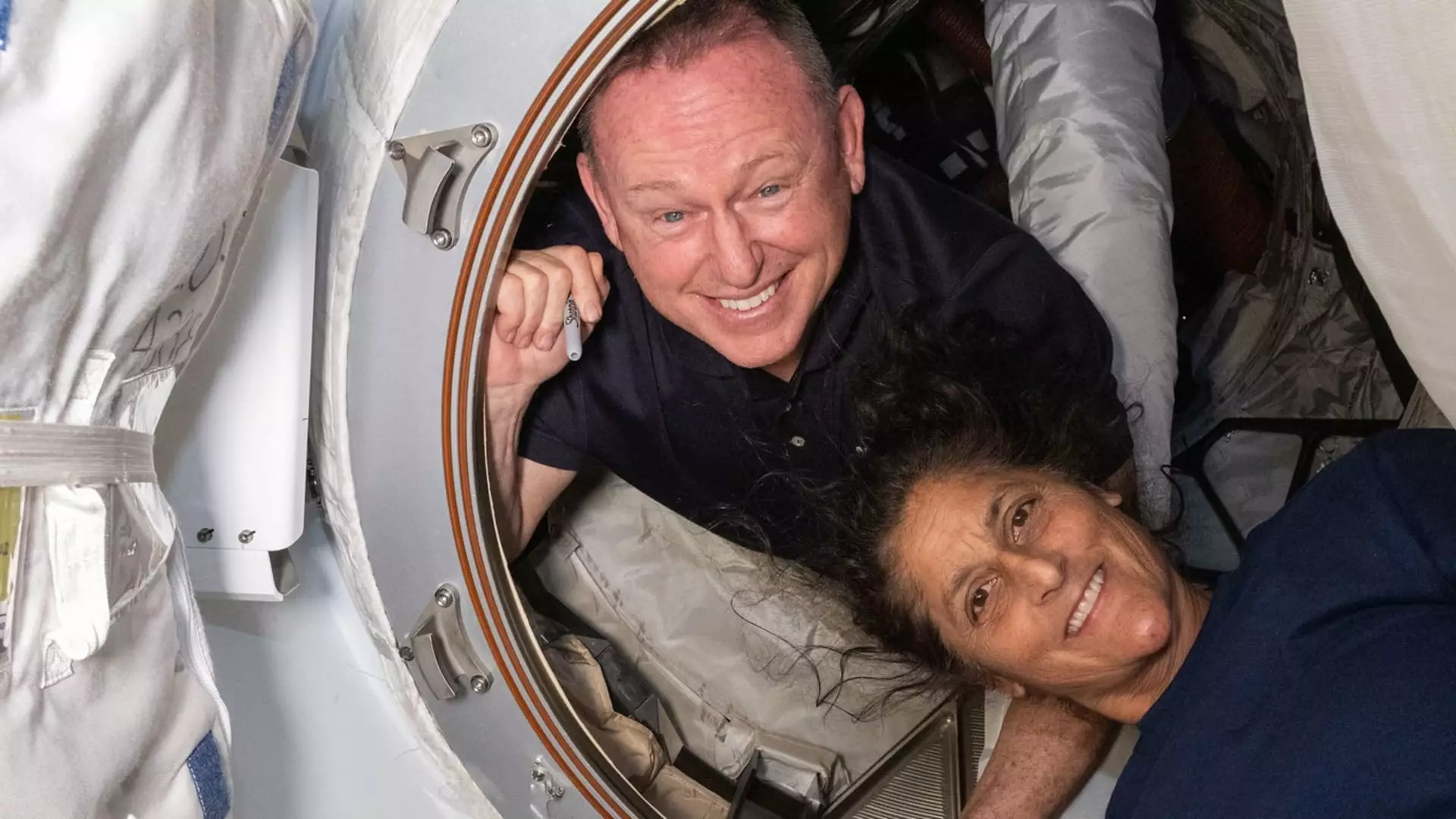In a profound showcase of both human resilience and the precarious nature of space travel, NASA astronauts Butch Wilmore and Suni Williams have spent the last nine months aboard the International Space Station (ISS) due to complications with Boeing’s Starliner capsule. Initially intended as a short nine-day testing mission, this journey spiraled into a lengthy saga that reflects the intricate dance between politics and space exploration. The failure of the Starliner’s thrusters during docking prompted fears over its reliability, forcing NASA to rethink their strategy regarding crewed spaceflight—a testament to the systemic issues plaguing Boeing’s foray into the commercial space sector.
The extended duration for Wilmore and Williams illuminates pressing concerns about the management of space missions. While both astronauts embraced their unplanned role, conducting scientific experiments and undertaking rudimentary maintenance, the multimillion-dollar fiasco arose not just from technical failure, but also from the perceived urgency imposed by political players determined to fast-track industrial ambitions. The question looms large: How can an agency revered for its groundbreaking achievements falter in the realm of safety and reliability?
Navigating the Political Minefield
As the situation unfolded, it became evident that external factors played a significant role. The political machinations surrounding the SpaceX and Boeing partnership added a layer of complexity to an already delicate operation. After Donald Trump took office, a push for urgency emerged, with accusations that the Biden administration was in some way prolonging the astronauts’ stay for political gain. Such rhetoric trivializes the complexities of space travel—overshadowing genuine safety concerns with unwarranted political narratives. This conflation of governance and space exploration raises a significant question: Should the ambitions of the commercial space sector be dictated by political timelines rather than by steadfast safety protocols?
This exploration demands a sober reckoning. Agencies like NASA must remain insulated from political gamesmanship to prioritize human lives and scientific integrity over the incessant pressure of a political agenda. Elevated expectations for rapid successes can risk compromising safety protocols designed to protect astronauts operating in the most unforgiving of environments.
The Unintended Winner: SpaceX
In a twist of fate, the fiasco surrounding Boeing’s Starliner inadvertently elevated SpaceX to the forefront of U.S. space exploration. With a decision made to use a SpaceX Dragon capsule for the return of Wilmore and Williams, NASA inadvertently reinforced the notion that the future of space exploration may be better served by agile, innovative private companies rather than traditional aerospace giants. This raises a profound narrative about competition in the space sector: while Boeing may have dreamt of dominating crewed missions through a lasting partnership with NASA, their missteps leave a significant chasm that SpaceX seems poised to fill with unparalleled efficiency.
Yet, the frustration surrounding Boeing’s handling of the Starliner project cannot be overlooked. Over $2 billion have been lost, marking the program as a cautionary tale against complacency and overconfidence in technologies that interact with human life. How can the industry hold these companies accountable while still nurturing innovation? The answers are crucial in defining the future dynamics of commercial space partnerships.
Returning Home: A New Chapter Awaits
As Wilmore and Williams prepare for their egress from the canvas of Earth, their journey symbolizes more than an astronautic return; it encapsulates the profound narrative of collaboration and resilience amid adversity. Their long, unforeseen stay aboard the ISS transitioned from an anomaly to an enlightening experience, fostering new insights in scientific pursuits. Williams’ remarks highlight a glimpse of insight into the psyche of astronauts: the constant readiness for the unknown and the fortitude it requires to adapt to evolving circumstances. Their mixed emotions reflect not merely a passage home, but the embodiment of increased understanding and learning—an integral part of humanity’s quest for exploration.
What remains to be seen is how the lessons harvested from this complex ordeal will influence future missions. The industry must confront the malaise of complacency, demanding higher standards from all parties involved. As we look towards the stars, it is essential to approach future ventures not merely as milestones to be reached, but as intricate commitments to safety, strategy, and the unyielding spirit of discovery.

